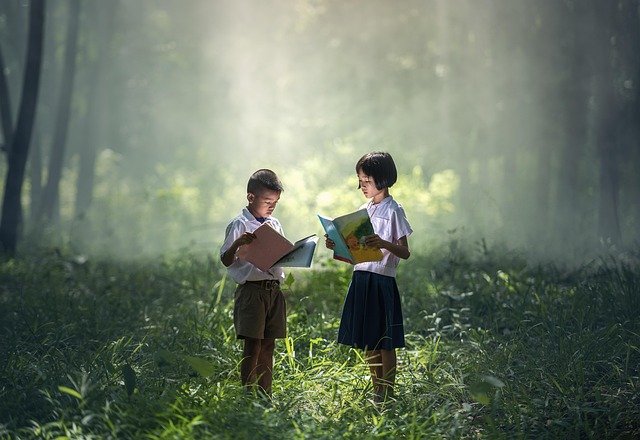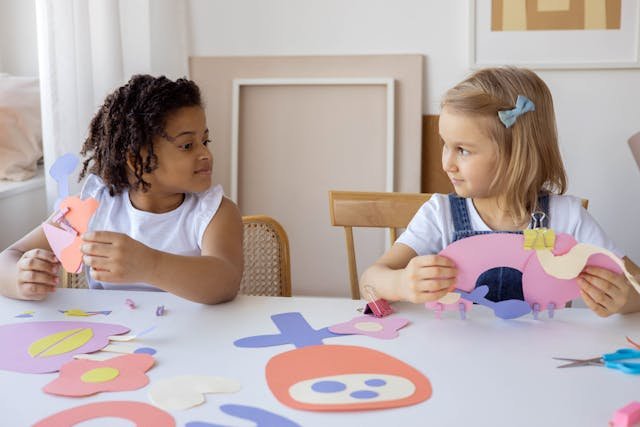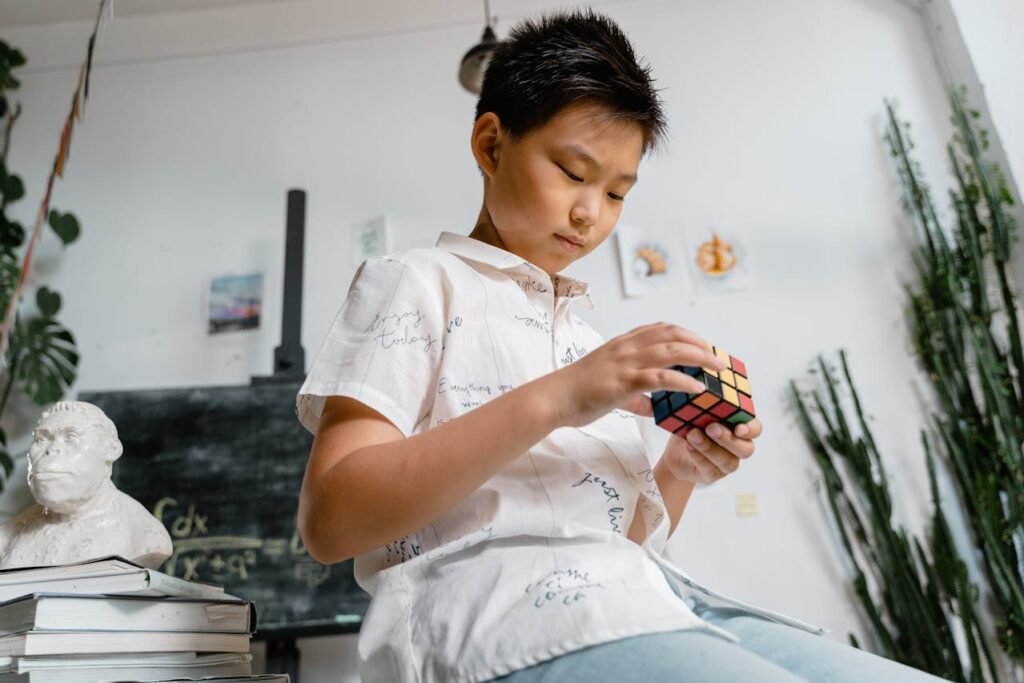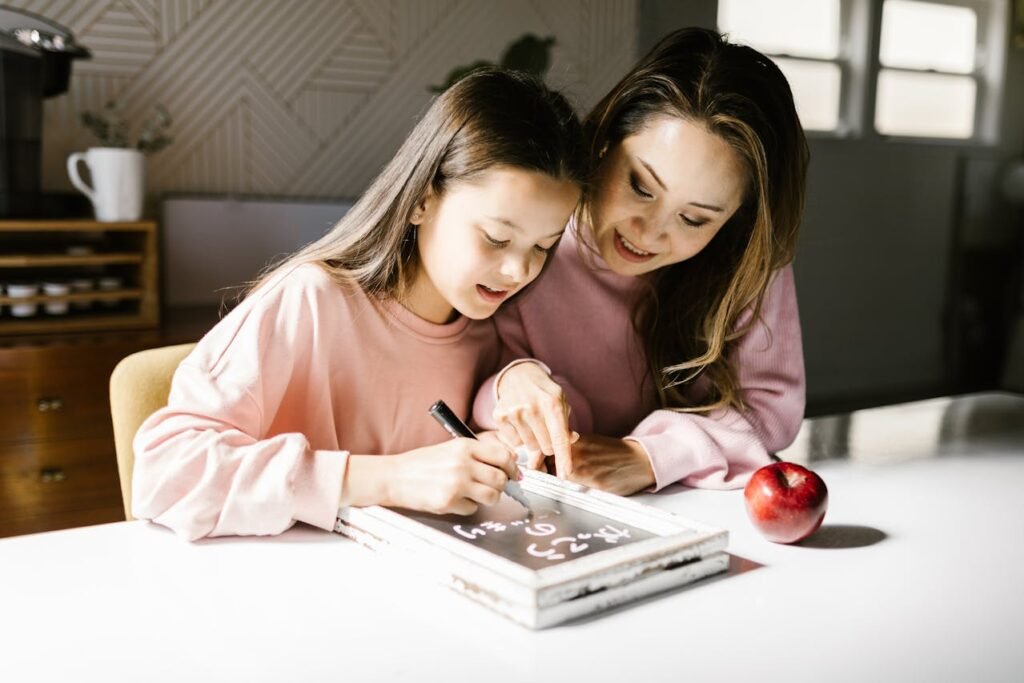Have you ever seen a child run through a field, climb a tree, or sit quietly watching clouds? It might look like play — but something powerful is happening in their brain.
Nature isn’t just a fun place to explore. It’s one of the best classrooms a child can ever have. The grass, the wind, the trees, the sounds — all of it works together to help children think better, feel calmer, and grow stronger in their minds.
At Debsie, we believe learning doesn’t have to be stuck to a desk. We teach science, math, coding, reading, and more — but we also help children learn how to focus, wonder, solve problems, and stay curious. And nature plays a big part in that.
In this article, we’ll explore how time outside helps build strong brains. You’ll learn why fresh air, dirt, sunlight, and green spaces can make your child smarter, calmer, and more focused — in ways that books and screens simply can’t.
Nature Helps the Brain Focus Better
In today’s world, children are surrounded by noise, screens, and busy schedules. Their brains are always “on,” jumping from one thing to the next. Even when they’re sitting still, their minds are racing — checking, watching, reacting. Over time, this makes it harder for them to stay calm, think clearly, or focus for long periods.
This is where nature comes in.
The Brain Needs a Break From Busy
When a child steps outside into a quiet, natural space, their brain gets something it doesn’t often receive — restful attention. This means they don’t have to force themselves to focus. Their brain relaxes naturally, without shutting down. It’s like the mind takes a deep breath.
A walk in the park, time in a garden, or even just sitting under a tree gives the thinking part of the brain a gentle reset. It’s not sleeping. It’s recovering. It’s clearing space so that deep thinking can happen later — in school, at home, or during learning time.
Focus Comes Back Stronger After Nature Time
Many researchers have studied children after they spend time in green spaces. What they found is simple but powerful: kids who spend time in nature come back with sharper focus. They listen better. They finish tasks more easily. They are less likely to give up when things feel hard.
Why does this happen? Because nature doesn’t ask too much of the brain. There’s no score to chase, no ads to click, no fast decisions to make. It allows the mind to slow down — and when the mind slows down, it clears up. Children return to learning ready, refreshed, and recharged.
At Debsie, We Use This Science in Real Ways
Even though Debsie is an online learning platform, we don’t believe that learning should only happen on a screen. In many of our lessons, teachers encourage children to step outside, observe natural things, and come back ready to share.
In science classes, we might ask students to look at the clouds or describe a tree. In writing, we might begin with a question like, “What did you hear when you stepped outside today?” These little moments connect digital learning with the outside world — and the results are beautiful.
We’ve seen students who were restless before class suddenly become calm and focused after just five minutes outside. Parents often tell us, “We took a short nature break before the lesson, and it made a huge difference.”
Nature Builds Stronger Problem-Solving Skills
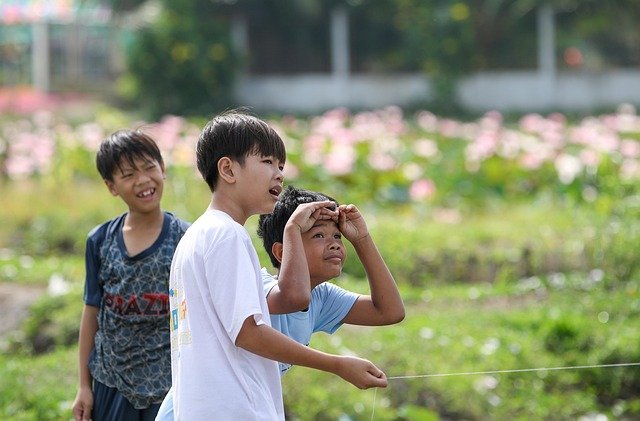
Many people think problem-solving happens only in math class or science labs. But the truth is, the brain learns how to solve problems in many different places — and one of the best places for that is outdoors.
When children explore nature, they’re not just running or picking up sticks. They are using their minds in deep, creative ways. They’re making decisions, trying ideas, adjusting when things don’t work, and learning from what they see. That’s real-world thinking in action.
Nature Makes the Brain Ask Questions
When a child sees an ant carrying a crumb or watches water drip off a leaf, their brain starts asking questions. “Why does it do that?” “Where is it going?” “What happens if I touch it?” These simple questions lead to complex thinking — curiosity, prediction, and reasoning all get involved.
Unlike videos or apps that give instant answers, nature invites children to wonder. It doesn’t rush them. It doesn’t tell them what to think. It gives them clues — and lets them figure things out. That freedom to explore builds the mental muscles needed for problem-solving in school and in life.
Nature Play Is Real Brain Work
Think about a child building a fort with sticks or trying to cross a puddle without getting wet. These don’t look like school tasks, but they are full of thinking. The child is planning, testing, adjusting, and trying again. That’s the same kind of thinking used in a science experiment or a tough math puzzle.
What makes nature different is that there’s no one “right” answer. There’s no grade. No fear of being wrong. This gives children a chance to take risks, make mistakes, and learn from them — all key parts of problem-solving.
Over time, this practice builds confidence. Children start to believe, “I can figure this out.” That belief carries over into their classroom, their homework, and their future.
At Debsie, We Grow Problem Solvers, Not Just Students
Our courses are designed to do more than teach facts. We guide students to think deeply, ask better questions, and try things on their own — just like they would in nature.
We’ve seen children who used to say, “I can’t do this,” begin to say, “Let me try something different.” That shift happens when we connect learning to real experiences. Sometimes, the best way to unlock a stuck mind is to step outside, try something hands-on, and then come back with a new idea.
That’s what nature time gives — not just energy, but mental flexibility. And that’s one of the most powerful thinking skills of all.
Nature Helps Children Manage Emotions and Stay Balanced
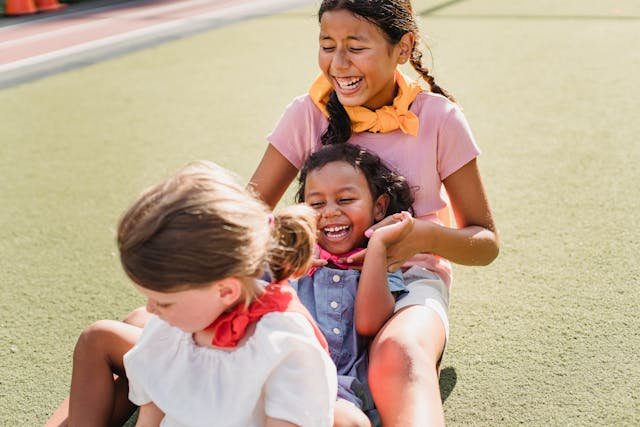
Thinking clearly isn’t just about the brain. It’s also about how we feel inside. When children feel calm, safe, and in control of their emotions, they can think better, learn faster, and handle challenges with more strength. This is another powerful gift that nature gives.
Spending time outdoors is not only good for the body — it’s good for the heart and mind too. It helps children deal with stress, feel happier, and recover faster from emotional ups and downs. And when emotions are steady, thinking becomes sharper.
Nature Calms the Brain and Body
In a busy day filled with classes, chores, screens, and noise, a child’s nervous system gets overwhelmed. Their brain feels “full,” and their body stays tense. This can lead to anger, anxiety, restlessness, or even sadness. That’s when children start acting out or shutting down — not because they’re bad, but because they’re overloaded.
But when a child steps into nature, something shifts.
The sounds of birds, the feel of sunlight, the movement of trees in the wind — these small, quiet things help the brain slow down. The body relaxes. Breathing becomes deeper. This calming effect helps the brain move from “fight or flight” mode into a state where real thinking and learning can happen.
Even a short walk in the park or a few minutes sitting on the grass can reset a child’s mood. It’s like emotional first aid — but without any medicine.
Nature Gives Space to Process Big Feelings
Sometimes children need space — not to avoid learning, but to let big feelings settle. Nature gives them that space. There’s no pressure. No one watching. Just open sky, fresh air, and time to breathe.
In this quiet space, children can reflect. They can think about their day, calm their worries, or just enjoy the feeling of being alive. This kind of “emotional rest” is just as important as sleep or food. Without it, the brain stays foggy. With it, the mind feels strong again.
Children who spend time in nature tend to bounce back faster from stress. They show more patience, more kindness, and more joy in their learning. That’s because emotional balance makes the brain more ready to think.
Debsie Supports the Whole Child — Emotions Included
At Debsie, we care about more than just academic success. We care about how children feel while they’re learning. That’s why our teachers always begin with a warm welcome, include time for reflection, and encourage students to take mindful breaks when they need to.
We also guide parents to build outdoor time into their child’s day. Just 10–20 minutes outside can turn a stressful morning into a focused lesson. We’ve seen children come into class flustered, take a moment to breathe outside, and return calm, alert, and ready to learn.
Because at the end of the day, a calm child is a thinking child — and nature helps make that happen.
Nature Grows Creativity and Imagination
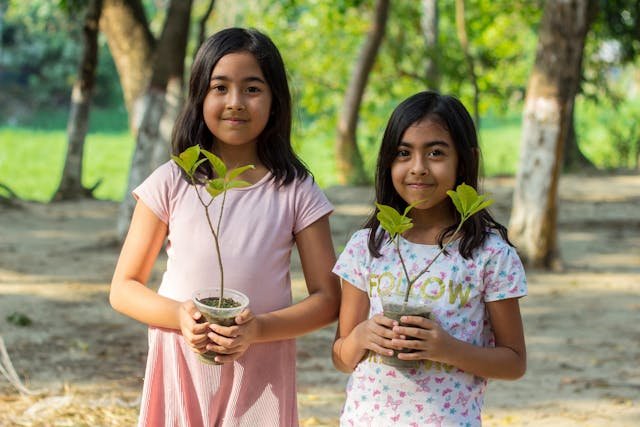
Thinking skills aren’t just about solving problems or remembering facts. Some of the strongest thinkers are also the most creative ones. They ask unusual questions, come up with new ideas, and imagine things others haven’t thought of yet. That’s how discoveries happen. That’s how real learning comes to life.
And guess what? One of the best ways to grow a creative mind is to spend time in nature.
Nature Has No Instructions — and That’s a Good Thing
Most toys, apps, and lessons tell children exactly what to do. “Press this button.” “Build it this way.” “Draw this picture.” But in nature, there are no clear rules. There’s no voice telling kids what to touch, build, or imagine. It’s a blank page — and their mind fills it in.
A child might turn a stick into a sword, or a leaf into a boat. They might build a tiny city in the dirt or invent a whole story just from watching clouds. This kind of open-ended play is where imagination grows strong. It teaches the brain to think beyond what’s given, to create something from nothing.
That’s not just fun — it’s powerful learning.
The Outdoors Sparks New Ideas
Creative thinking often begins with observation. The more a child sees, the more they can imagine. When children spend time in nature, they’re surrounded by new colors, shapes, textures, and movements. Every leaf is different. Every cloud moves in a new way. Even the sound of birds can inspire a poem, a drawing, or a question.
This kind of sensory richness feeds the brain. It gives children more “stuff” to work with when they’re writing, building, painting, or problem-solving. Their ideas become more detailed. Their work becomes more thoughtful. And their minds stay more curious.
At Debsie, Creativity Isn’t Extra — It’s Essential
We believe imagination is a core part of intelligence. In our Debsie classes, whether it’s science, writing, or coding, we always leave room for children to think creatively. We don’t just ask for correct answers — we ask for different answers. We ask for “what ifs,” for stories, for new ideas.
When we connect those lessons to nature — through outdoor observation, sensory prompts, or real-world challenges — creativity flows even faster. Children are no longer just students. They become thinkers, makers, dreamers, and doers.
And that’s exactly who we want them to be.
Small Doses, Big Results: Why Even a Little Nature Time Helps
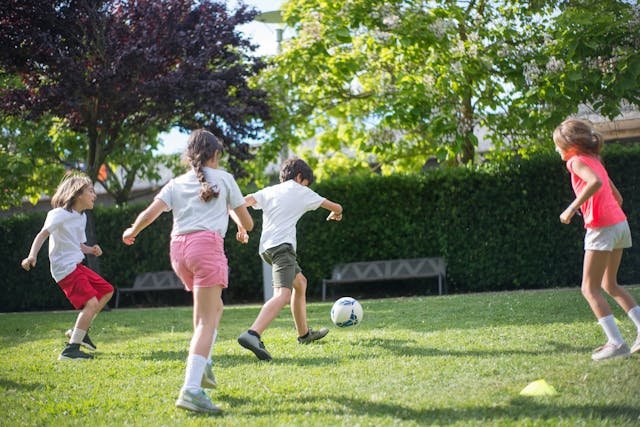
Not every family lives near a forest or has access to wide green fields. Some families are in cities, small apartments, or places where outdoor space is limited. But here’s the good news — your child doesn’t need hours in the wilderness to enjoy the brain-boosting benefits of nature.
Even short, simple moments outside can help your child’s mind feel clearer, calmer, and more focused. What matters most is being present — not how big or wild the space is.
Five Minutes Can Change the Day
Just five to ten minutes outside — walking around the block, sitting on the balcony, or playing in a small yard — can give the brain a gentle reset. The sights, sounds, and smells of nature, even in small doses, still speak to something deep in a child’s mind. It doesn’t need to be perfect. It just needs to be real.
Children who spend even a few minutes outside before school, before homework, or after screen time often come back with better focus. Their thoughts slow down. Their mood improves. And they feel more ready to learn, talk, or work through a challenge.
Nature Can Be Found in Small Places
Many families discover creative ways to bring nature into daily life. A few plants by the window. A bird feeder on the balcony. Watching ants in a crack on the sidewalk. Listening to the wind or rain. These tiny moments may not seem like much, but they’re full of sensory value — and that’s what the brain loves.
Some parents build a “nature moment” into the day, like stepping outside after breakfast or taking a few deep breaths by the door before online classes. These mini-routines help children connect with their surroundings, even if they live in busy or crowded areas.
At Debsie, We Respect All Learning Environments
We know that not every child has the same access to nature. That’s why our teachers are trained to meet kids where they are. In our lessons, we often include activities that invite children to notice the world around them — whether it’s a tree outside the window or the way sunlight hits the floor.
We help children connect their learning to their everyday world. That could mean a science class that includes a weather walk. Or a writing class that starts with a nature-inspired poem. The point is: nature can be part of learning anywhere, because the mind brings the outdoors inside.
Nature Makes School Subjects Come Alive
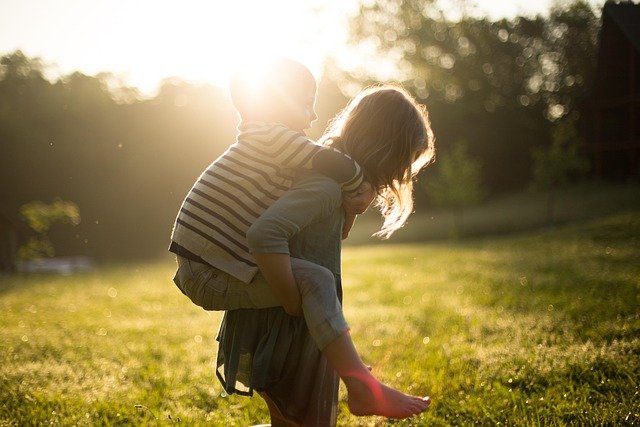
Many parents think of nature as something separate from schoolwork. But the truth is, spending time outside can actually make children better at traditional subjects — not by memorizing facts, but by understanding how the world really works.
At Debsie, we’ve seen again and again how connecting learning to nature makes lessons more exciting, more understandable, and easier to remember. It doesn’t replace academics — it supercharges them.
Science Feels Real in the Outdoors
Science isn’t just something children read in books. It’s all around them — in the wind, the bugs, the clouds, the dirt. When children spend time outside, they’re living science. They notice patterns. They ask why things happen. They start to think like young scientists, long before they pick up a worksheet.
A child who watches rain drip from a roof is learning about gravity. One who sees a butterfly land on a flower is exploring ecosystems. These small, real-life experiences make science personal — and when science feels personal, it sticks.
In Debsie science classes, we often ask students to use the world around them as a lab. We invite them to go outside, notice the weather, observe insects, or compare plants. This makes their learning active, not passive — and that’s when real understanding begins.
Nature Builds Stronger Readers and Writers
Reading and writing don’t grow only from books. They grow from experiences. When children spend time in nature, they’re filled with sights, sounds, and emotions. These become the raw material for strong stories and rich language.
A child who has walked through a foggy morning can describe setting with detail. A child who’s listened to birds or touched soft leaves can use vivid words in their writing. Nature gives the brain something to describe, and this builds vocabulary, sentence strength, and reading comprehension.
Even reading itself becomes easier after nature time. Children are calmer. Their brains are clearer. They’re more ready to sit still and absorb what’s on the page. That’s why a quick walk before a reading session — even just around the yard — can lead to better focus and deeper understanding.
Math Becomes Meaningful Through Nature
You might not think of math when you see a tree or a pile of stones, but nature is full of math. Patterns in leaves. Shapes in rocks. Counting steps. Estimating distance. These natural moments help children see math as something real — not just numbers on a page.
When kids collect pebbles, sort leaves, or measure shadows, they’re using early math skills in action. At Debsie, we encourage this kind of real-world connection. Our math teachers often bring nature into lessons, using natural objects to explain concepts like sorting, measuring, symmetry, or even geometry.
When math is part of play and observation, children feel less anxious — and more excited to explore numbers in deeper ways.
How Debsie Supports Nature-Connected Learning in a Digital World
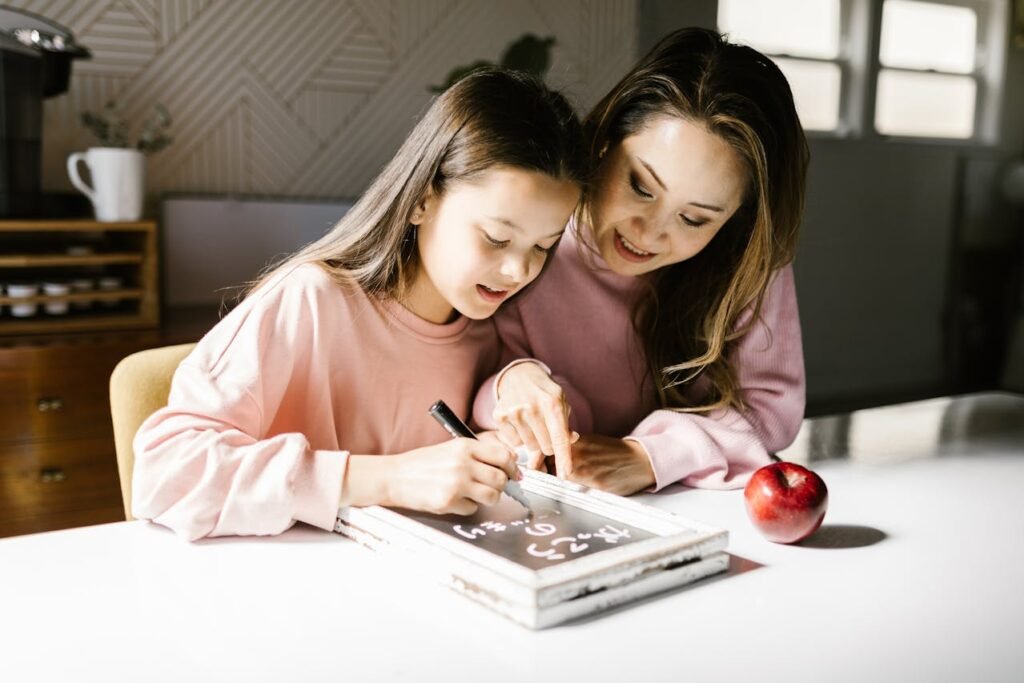
Debsie is a global online learning platform, but that doesn’t mean we’re only about screens. We understand that children need real-world experiences to grow smarter, calmer, and more connected to their learning. That’s why we weave nature into our lessons — even when those lessons happen online.
We believe that a strong brain isn’t built just by clicking through answers. It’s built by wonder, movement, curiosity, and real connection to the world — and nature plays a big part in that.
We Design Lessons That Invite the Outside In
In many of our courses — from science to storytelling — our teachers use nature as a tool. We ask students to observe the sky before writing a poem. We ask them to collect three natural items to use in a sorting activity. We encourage them to look outside their window to describe weather patterns.
These small steps help children understand that learning doesn’t only happen on a screen. It happens everywhere — especially in the living world around them. By connecting learning to the outdoors, we make school subjects more interesting and more personal.
We Help Families Build Nature Time Into the Day
We know parents are busy, and that schedules can get tight. That’s why we offer simple, realistic ideas for bringing nature into daily routines. Before class starts, we suggest a two-minute nature break. After homework, we may recommend a small “outside reflection” activity. These ideas take almost no time — but they make a big impact.
Over time, these short nature moments become habits. Children start looking forward to stepping outside. Parents begin to notice that their kids are calmer, more focused, and more eager to learn. It’s not about adding more to your plate. It’s about changing how the day flows — gently, naturally, and with the brain in mind.
We Support Every Child, in Every Environment
Not every child has a backyard. Not every family lives near a park. We understand that. That’s why our nature-friendly activities are flexible. A child can notice the color of the sky from a balcony. They can observe a bug on the sidewalk. They can talk about how sunlight feels on their skin.
No matter where your child lives, they have access to nature in some way. Our teachers help children notice the magic in small things, and use those moments to build stronger minds.
This approach doesn’t just help with schoolwork. It helps with focus, thinking, emotion regulation, and creativity — all the things that make learning smoother and life more joyful.
Conclusion: The Outdoors Is One of the Brain’s Best Teachers
In a world filled with busy schedules, homework, and screen time, nature gives children something they need more than ever — space to think, time to breathe, and freedom to grow.
It’s not just a break. It’s a brain booster. When children spend time outside, they become calmer, more focused, more creative, and more confident. Their thinking skills grow. Their emotions settle. And they start to see learning not just as something they do in books — but something they live.
At Debsie, we believe in the power of fresh air and real learning. Whether your child is solving a science puzzle, writing a story, or exploring math through natural shapes, we help connect the dots between curiosity, calm, and confidence — with nature as a quiet, steady guide.
You don’t need special tools. You don’t need a big garden. You just need a few minutes, a patch of sky, and a child who’s ready to learn with their whole heart and mind.
👉 Book a free trial class with Debsie today — and see how we help children grow smarter, happier, and more grounded, inside and out.
Read Next:
